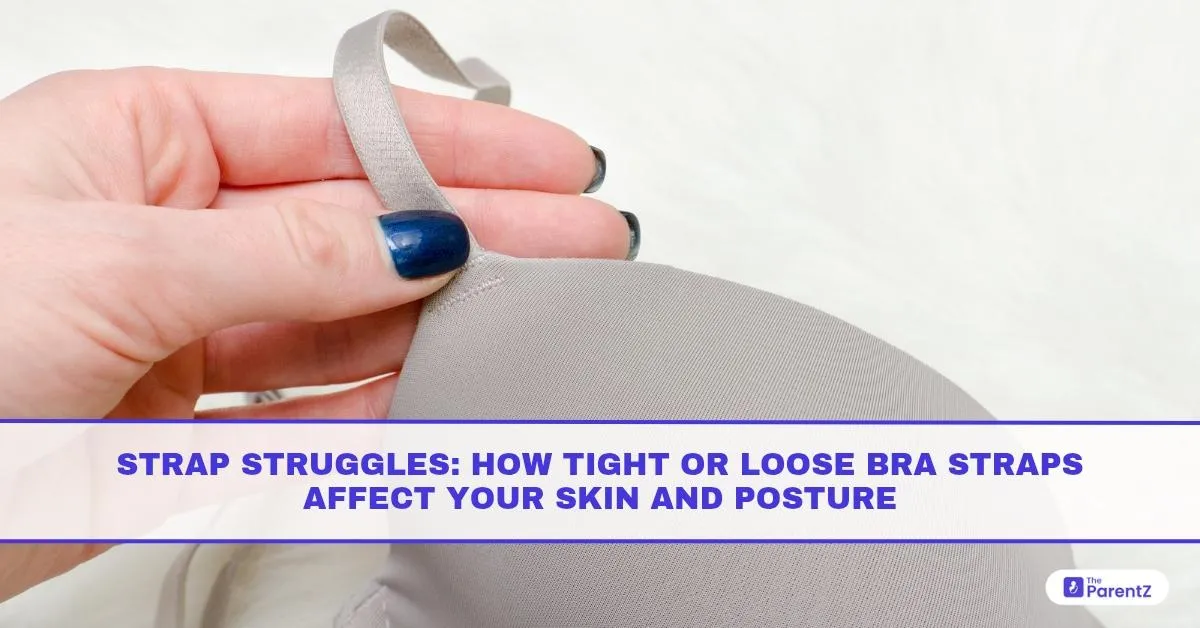Nisha was used to tugging her bra straps every few minutes. They either slipped off her shoulders or dug painfully into her skin, leaving deep red marks by the end of the day. She thought this was just part of wearing a bra—until she started noticing headaches and neck tension that wouldn’t go away.
It’s a story many women know too well: straps that feel like they never sit right, and a sense of constant fidgeting that’s both uncomfortable and distracting. Yet most don’t realize how much strap tension affects not only the skin on the shoulders but also posture and overall body alignment.
The Hidden Damage of Tight Bra Straps
When bra straps are adjusted too tightly, they press into the soft tissues of your shoulders. Over time, this pressure can lead to:
- Visible red or dark lines where straps dig in
- Skin irritation, including rashes or even small wounds in sensitive skin
- Compression of nerves running from the neck to the arms, causing numbness or tingling
- Increased tension in the upper back and neck muscles, sometimes leading to tension headaches
- Subtle but significant changes in posture as you hunch forward to relieve discomfort
Chronic tightness in straps can also cause something called bra strap grooves, which are permanent indentations in the skin and fatty tissue of the shoulders. These grooves can deepen with years of wearing poorly adjusted bras and may cause long-term pain.
Why Loose Straps Are Just as Problematic
On the other end of the spectrum, straps that are too loose fail to offer necessary support. Without stable straps, the weight of the breasts shifts entirely to the band or cups, often causing:
- Constant slipping of straps off the shoulders, leading to fidgeting
- Loss of lift, which can cause bras to ride up at the back, creating poor chest support
- Compensation by rounding or slouching the shoulders, worsening posture
- Uneven distribution of weight across the chest, causing one shoulder to carry more strain than the other
Many women tighten their straps to compensate for a loose bra band, but this quick fix only worsens the problem, shifting support away from where it should come: a snug, supportive band around the ribcage.
How Proper Strap Adjustment Supports Healthy Posture
Correctly adjusted straps gently rest on the shoulders without pulling. The ideal tension keeps the cups lifted but does not leave deep marks. This balance helps:
- Align the spine, reducing slouching and forward head posture
- Distribute breast weight evenly across the bra band and cups, avoiding over-reliance on shoulders
- Encourage natural, relaxed shoulder positioning, reducing strain on neck muscles
- Prevent the development of asymmetrical posture or chronic shoulder pain
A well-fitting bra should carry most of the support from the band, about 80% with the straps doing the remaining 20% to keep cups in place.
How to Find the Right Strap Fit
Standing in front of a mirror, adjust the straps so you can comfortably slide two fingers underneath without difficulty. This “two-finger test” ensures straps aren’t too tight or too loose.
Remember to adjust straps regularly: as bras age, elastic stretches and loses tension, causing straps to lengthen. Re-check every few weeks or after washing bras, since laundering can subtly affect strap length.
If you notice one strap constantly slipping, check your shoulders’ natural slope; many people have one shoulder slightly lower than the other. Adjust straps individually to match your body’s shape rather than keeping them perfectly even.
Don’t Ignore the Band
Many women mistakenly think straps alone provide lift. But if your bra’s band is too loose, the straps will have to overcompensate by pulling tighter, causing grooves and discomfort. A properly fitted band should feel firm but not restrictive around your ribcage. When you lift your arms, the band should stay level, not ride up.
When to Seek Professional Help
If you’re experiencing constant neck, shoulder, or upper back pain, and adjusting straps doesn’t resolve it, it’s worth consulting a professional bra fitter or your doctor. Sometimes, persistent issues can signal:
- Bras that are the wrong size altogether
- Breasts that need special support due to large size or asymmetry
- Musculoskeletal issues unrelated to bra fit that require physiotherapy or medical care
Practical Tips for Everyday Comfort
- Choose bras with wider, padded straps if you have larger breasts; these distribute weight more evenly and reduce shoulder strain
- Rotate bras to avoid wearing the same one every day, giving elastic time to recover
- Wash bras in cold water and avoid twisting or wringing straps, which damages elasticity faster
- When trying on a new bra, move your arms around, bend, and reach overhead to ensure straps stay in place without discomfort
- Consider racerback or cross-back styles if your shoulders are narrow or sloped, as they help straps stay put
Final Thoughts: Small Adjustments, Big Relief
After a proper fitting, Nisha noticed her headaches eased and her posture felt more natural. She stopped worrying about straps sliding or digging, and her shoulders no longer ached by evening. Simple adjustments to bra straps can transform daily comfort and protect the delicate skin and muscles of your shoulders.
Remember: your bra should support you and not hurt you. Listening to your body, adjusting straps mindfully, and choosing bras with the right band size can make a world of difference for your skin, posture, and confidence.








Be the first one to comment on this story.